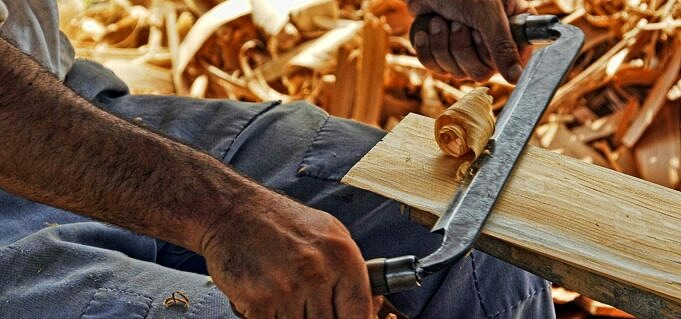After posting the first two parts of Evolution I received a few letters and calls asking why I moved from woodworking, my passion, into teaching then to a full-time position with magazine. I can answer your question with economics and education. It is also the subject of the last of the series. Click on the links to see Part 1 and Part 2.
We were accepted to a local trade show. Over the next six months, we built furniture and a booth. Our first show date arrived and was, in my eyes, a success. We sold many pieces. The company was off and running.
Wonder why we decided on exhibiting at shows? It’s simple. This is what we knew was possible. Although I may be closed-minded, it is still the best way to go, even with a small budget. I had heard that woodworkers could make six-figure sales at shows during the early days of people moving to the country and hand-built furniture. I wanted my share.
We were juried into several shows and eventually exhibited at 14 events. I was more active on the road than in my shop building furniture. But, we were selling items and building a customer base. The problem was that I wasn’t making any money.
On my way back from the East Coast show, I stopped at a Pennsylvania furniture-making business. (The shows that were the most successful for us due to the furniture we made) and spoke with the first woodworker who was standing outside the door. I was shown around the shop by him, and we talked about the business. He then shared a little bit of information. He stated that after so many years in business, the shop was just now able to bring their prices up to where they should be. Raise prices? This is not something you would do when building a business, unless it’s a necessity. It was a necessity. It was a necessity.
Not only did we raise prices but I also did the next hardest thing in business , cut our expenses. We realized that shows were expensive so we eliminated weekends that weren’t productive. However, we noticed that attendance was declining each time we exhibited at shows.
Shortly into my new venture I met the editors of at a show. After meeting them again at our shop, they asked me if I was interested in writing an article. Gladly, I shot back. It was the perfect opportunity to have a second source of income. I was able to publish my first book thanks to the articles. Suddenly, I saw the business evolving again.
As the next book came out and the magazine articles continued, the Cincinnati Woodworking Club invited me to speak on case construction. You know I accepted! It was also a lot of fun. Sharing information (teaching) was a rush. It never occurred to me that the mistakes I made in building furniture might help others who are interested in woodworking.
I began to search for teaching opportunities and luckily found a few. Good thing, because show sales continued dropping and my time in the shop building for customers was starting to be swallowed by the time spent building for the articles and preparing for presentations and teaching. Five pieces of furniture were on display at the last show. Three were from my third book, and two were taken from our home. The short inventory list didnt much matter; there werent enough customers at the show willing to buy.
I was eager to apply for the magazine staff position when it became available. I rode the twists and turns in life from furniture maker to writing and teaching, and found education to be a powerful elixir. Life would be good if I could get one woodworker over the hump with a problem, inspire them to build something great, or simply spend a weekend talking woodworking.



